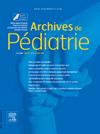Investigating risk factors for hypospadias: insights from a study in Eastern Algeria
IF 1.3
4区 医学
Q3 PEDIATRICS
引用次数: 0
Abstract
Background
Hypospadias is among the most common congenital anomalies of the male genitalia, with a multifactorial cause involving genetic, environmental, and maternal factors. In Algeria, the condition remains under-studied, with limited data on its epidemiology and risk factors.
Objective
To analyze the clinical characteristics, associated anomalies and key risk factors for hypospadias in Eastern Algeria over a 16-year period.
Methods
This retrospective case-control study included 483 hypospadias cases and 503 healthy controls. Cases were identified through medical records from the Pediatric Surgery Department, while controls were recruited via online questionnaires. Statistical analyses, including logistic regression, were performed to identify independent risk factors.
Results
Significant risk factors for hypospadias included low birth weight (<2500 g; OR = 11.86, p < 0.001), intrauterine growth restriction (IUGR) (OR = 2.36, p = 0.027), maternal gestational hypertension (OR = 2.65, p = 0.008), and rural residence (OR = 3.78, p < 0.001). Severe forms of hypospadias were associated with a higher prevalence of anomalies, particularly genitourinary anomalies (81.82 %).
Conclusion
Hypospadias in Eastern Algeria is strongly influenced by perinatal, maternal, and environmental factors. Enhancing prenatal care, enforcing stricter environmental regulations, and improving healthcare access in rural areas are crucial steps in reducing the burden of this condition and its complications.
调查尿道下裂的危险因素:来自阿尔及利亚东部一项研究的见解。
背景:尿道下裂是男性生殖器最常见的先天性异常之一,其病因多因素,包括遗传、环境和母体因素。在阿尔及利亚,对该病的研究仍不充分,关于其流行病学和危险因素的数据有限。目的:分析16年来阿尔及利亚东部地区尿道下裂的临床特点、相关异常及主要危险因素。方法:回顾性病例对照研究包括483例尿道下裂患者和503名健康对照者。病例是通过儿科外科的医疗记录确定的,而对照组是通过在线问卷调查招募的。进行统计分析,包括逻辑回归,以确定独立的危险因素。结果:低出生体重是尿道下裂的重要危险因素(结论:阿尔及利亚东部地区的尿道下裂受围产期、产妇和环境因素的强烈影响。加强产前护理、执行更严格的环境法规和改善农村地区的医疗保健可及性是减轻这种疾病及其并发症负担的关键步骤。
本文章由计算机程序翻译,如有差异,请以英文原文为准。
求助全文
约1分钟内获得全文
求助全文
来源期刊

Archives De Pediatrie
医学-小儿科
CiteScore
2.80
自引率
5.60%
发文量
106
审稿时长
24.1 weeks
期刊介绍:
Archives de Pédiatrie publishes in English original Research papers, Review articles, Short communications, Practice guidelines, Editorials and Letters in all fields relevant to pediatrics.
Eight issues of Archives de Pédiatrie are released annually, as well as supplementary and special editions to complete these regular issues.
All manuscripts submitted to the journal are subjected to peer review by international experts, and must:
Be written in excellent English, clear and easy to understand, precise and concise;
Bring new, interesting, valid information - and improve clinical care or guide future research;
Be solely the work of the author(s) stated;
Not have been previously published elsewhere and not be under consideration by another journal;
Be in accordance with the journal''s Guide for Authors'' instructions: manuscripts that fail to comply with these rules may be returned to the authors without being reviewed.
Under no circumstances does the journal guarantee publication before the editorial board makes its final decision.
Archives de Pédiatrie is the official publication of the French Society of Pediatrics.
 求助内容:
求助内容: 应助结果提醒方式:
应助结果提醒方式:


